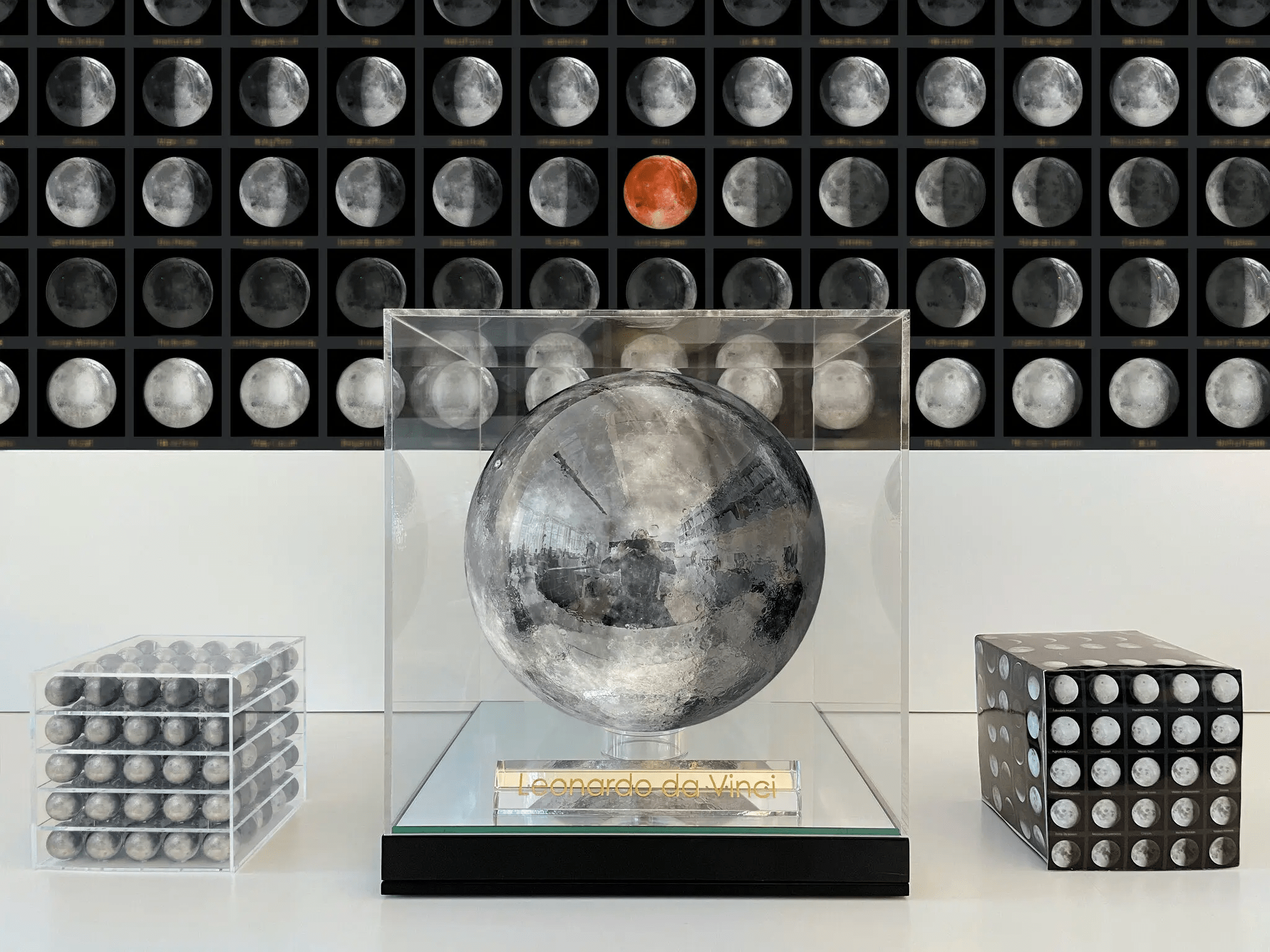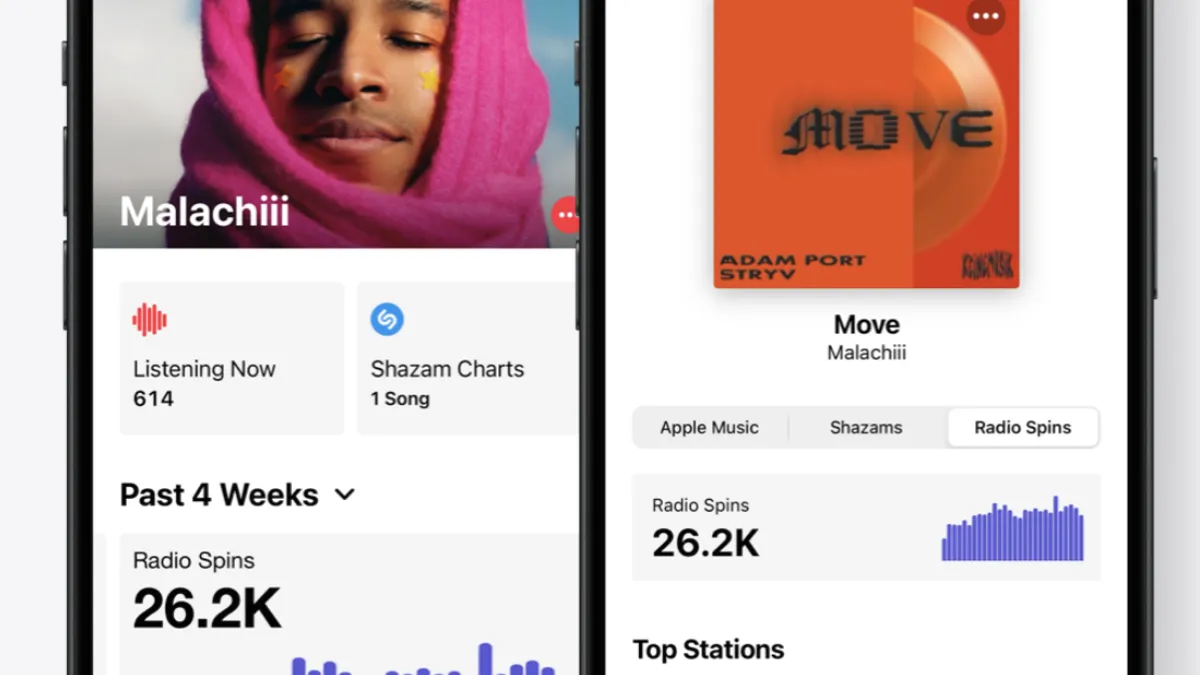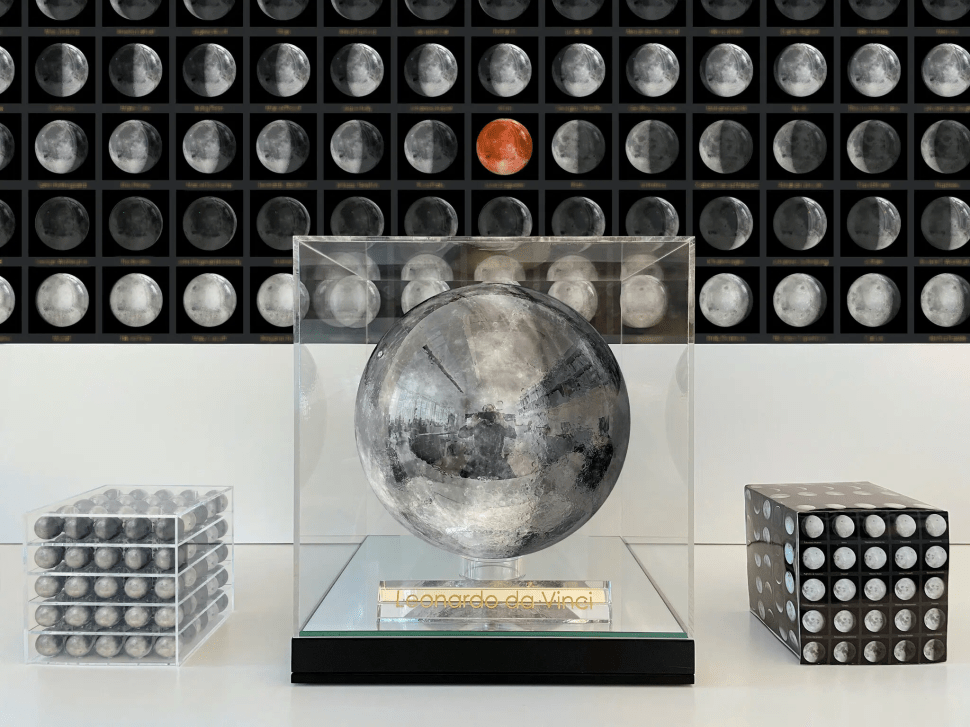
In 1965, six American artists delicately etched masterpieces on a tiny ceramic tile. Andy Warhol, Claes Oldenburg, Robert Rauschenberg, John Chamberlain, David Norvos and Frosty Myers teamed up with the organization Experiments in Art and Technology (E.A.T.) and scientists at Bell Laboratories to engrave their drawings onto a canvas less than an inch wide. The images included Warhol’s doodle of a penis, Oldenburg’s bootleg take on Mickey Mouse and Rauschenberg’s finely drawn diagonal line.
They handed the work off to a NASA engineer who smuggled it into the leg of the Lunar Module Intrepid of the Apollo 12 mission, making sure it would be left behind before the vessel returned to Earth. Once “Moon Museum” reached its eponymous destination, the tile made history as the first artwork to reach the satellite—a platform that was the stuff of boyhood imaginations.
“Moon Museum” was an unsanctioned project, and NASA has never confirmed whether the engraved tile successfully reached its destination. A good faith reading, however, would have one believe that it reigned as the moon’s only artwork in situ for 70 years. That streak was set to end in January of this year when Dubai-based British artist Sacha Jafri would have become the first person with an official moon art commission.
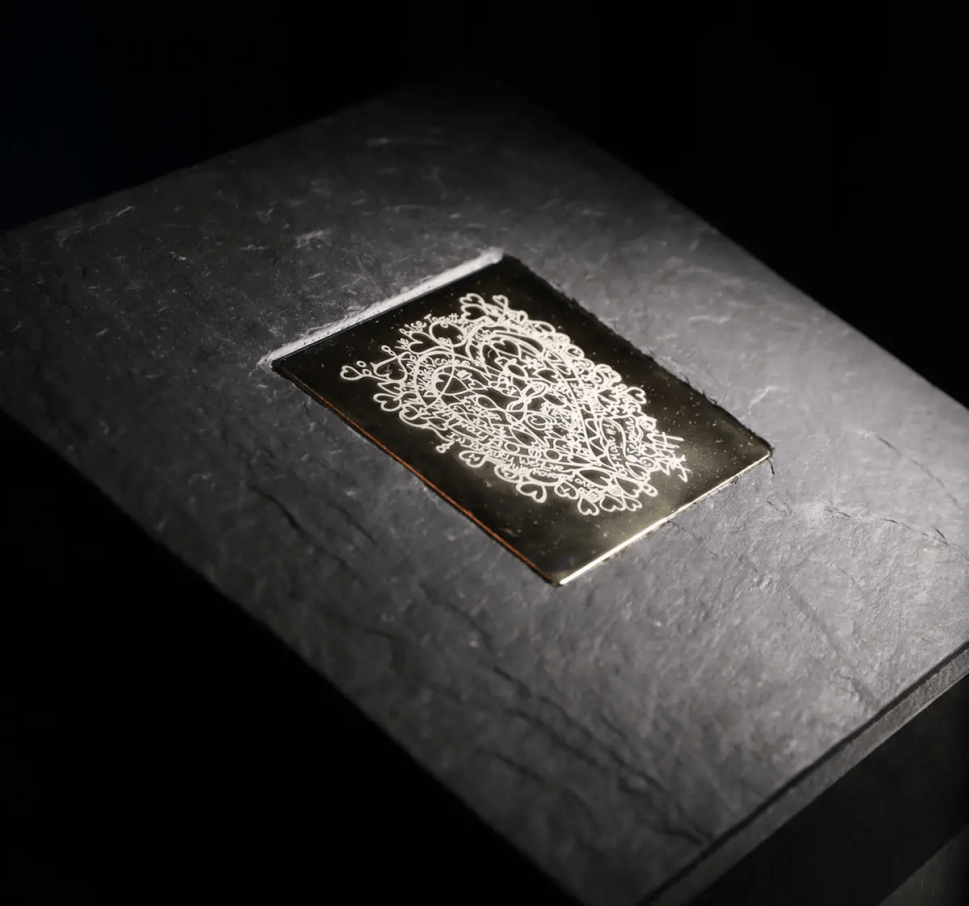

Jafri, whom you may remember as the creator of the world’s largest painting on canvas, sent up an engraved gold alloy plate entitled We Rise Together—with the Light of the Moon on the Peregrine lander of United Launch Alliance’s Vulcan Rocket after being approached by NASA’s Commercial Lunar Payload Services (CLPS). Look at the abstract piece long enough, and his cluster of overlapping squiggles reveals dozens of hearts and two figures embracing. It was a saccharine expression of hope in humanity; We Rise Together communicated that we’d rather make love than war.
SEE ALSO: Where to See Art Created and Curated Via Indigenous Perspectives
Unfortunately, the lander, and with it Jafri’s work, failed to make its scheduled moon touchdown due to a propellant leak. But just one month later, the Odysseus lunar lander brought three more art projects to the moon: Moon Phases, a collection of 125 mini moon sculptures created by famed “balloon dog artist” Jeff Koons; the Lunar Codex, an archive that condenses over 30,000 pieces of art, music, poetry, music and films into several memory cards; and Space Blue’s Lunaprise Museum, a collection of 222 NFTs—digital twins of artworks on earth—compressed into a nickel disc.
It looks like what used to be the most elusive gallery in the universe is now the hottest gallery in town.
Thanks to the whimsy of billionaires, the world has entered a new era of space exploration. Private companies like Elon Musk’s SpaceX, Jeff Bezos’s Blue Origin and Kam Ghaffarian’s Intuitive Machine, which launched the Odysseus lander in partnership with NASA, have turned Earth’s lone orbiting satellite into something of a playground. For the first time in history, civilians—those of means, anyway—can launch themselves into the atmosphere and see the sun bending across the Earth’s curves.
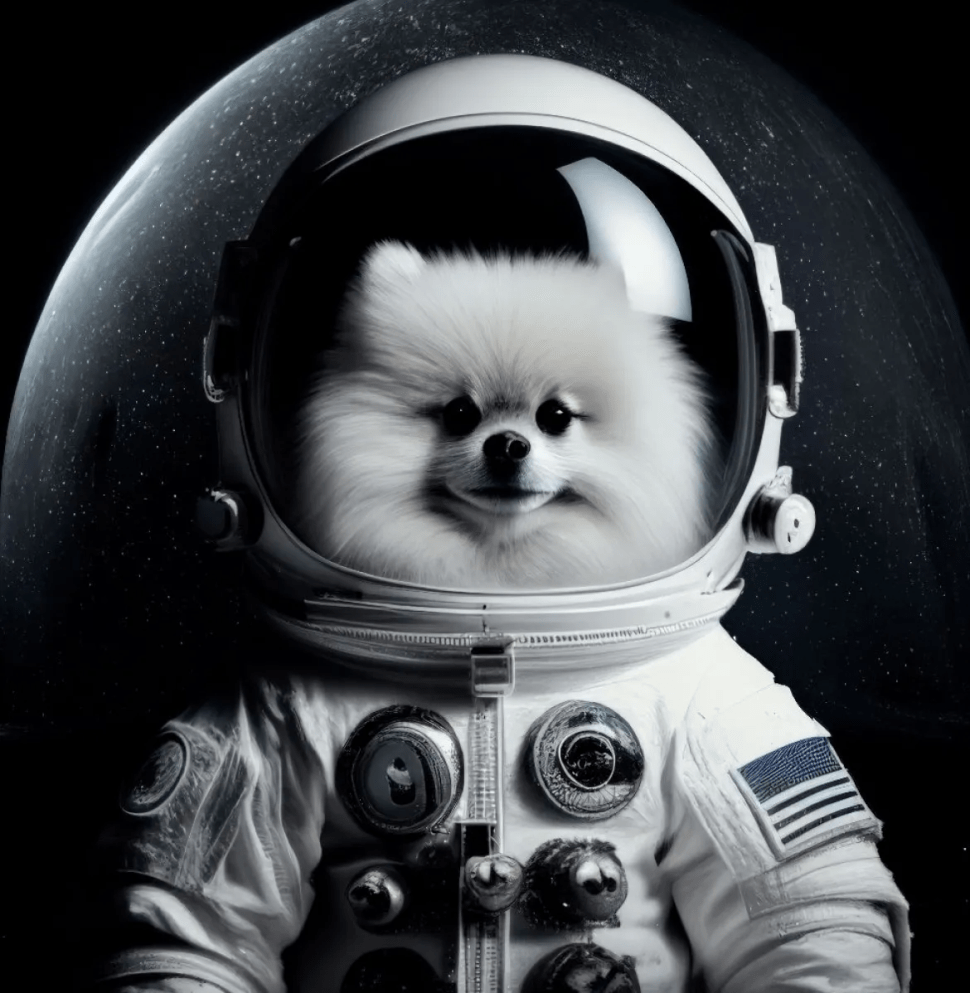

With this comes new opportunities to turn the moon into a cultural entertainment venue. In addition to the artworks, Lady Gaga was once booked to play a concert aboard a Richard Branson Virgin Galactic spacecraft (canceled) and fashion mogul Yusaku Maezawa assembled a team of his favorite creatives, among them DJ Steve Aoki, to circumvent the moon (also canceled.) Though the celebrity voyages have yet to materialize, mostly due to the exorbitant expense and safety concerns, a lunar Madison Square Garden is most certainly looming in our future.
It’s worth pointing out that the artworks that have made it to space end up as little more than tiny pieces of cryptic litter. Without a crew to unload landers, the artworks stay locked unceremoniously inside defunct spacecraft, never making contact with moondust. There are no exhibition spaces. Even if a creature, human or extraterrestrial, rediscovered these works in the far-flung future, they’re generally unrecognizable as art. The modern format of moon artwork usually involves high-tech laser etchings of metadata on ceramic, metal or NanoFische. With the exception of Koons’s physical mini moons, the thousands of artworks on the moon are unviewable until digitally decoded, and who’s to say alien lifeforms will have the proper technology to discover what’s on those devices?
We’ve made this gamble before. In 1977, NASA launched the Golden Record, which documented the sounds of the planet Earth, into space. This experiment, led by Carl Sagan and Ann Druyan, was carefully curated to include a multitude of languages and music from both Eastern and Western cultures. If the record (now in the Kuiper belt) is ever discovered by someone from another civilization, the listener could hear rock and roll from Chuck Berry, concertos from Bach, a wedding song from Peru, and percussion from Senegal. In contrast, the Lunaprise Museum would have our hypothetical alien art appreciator thinking that NFTs were the most celebrated form of art on Earth rather than a confounding trend.
For the foreseeable future, moon art remains performance rather than exhibition. It’s a canon curated by the one percent, created by a roster of artists who befriended the right billionaires. In many ways, the contemporary artworks sent by Jafri and Koons, the Lunar Codex and the Lunaprise Museum represent the same juvenile ambitions and connections that led to the did-they-didn’t-they Moon Museum, showing that humanity hasn’t made much progress when it comes to our desire to get art into space. Rather than sending our best to the moon, we are staking a claim. Like teen lovers carving their initials into trees, the mythos surrounding the lunar artworks will outlast the impact of the art itself.



